Danny-Exercicio4-BigData-Cap3-DannyAlexLachosPerez
advertisement
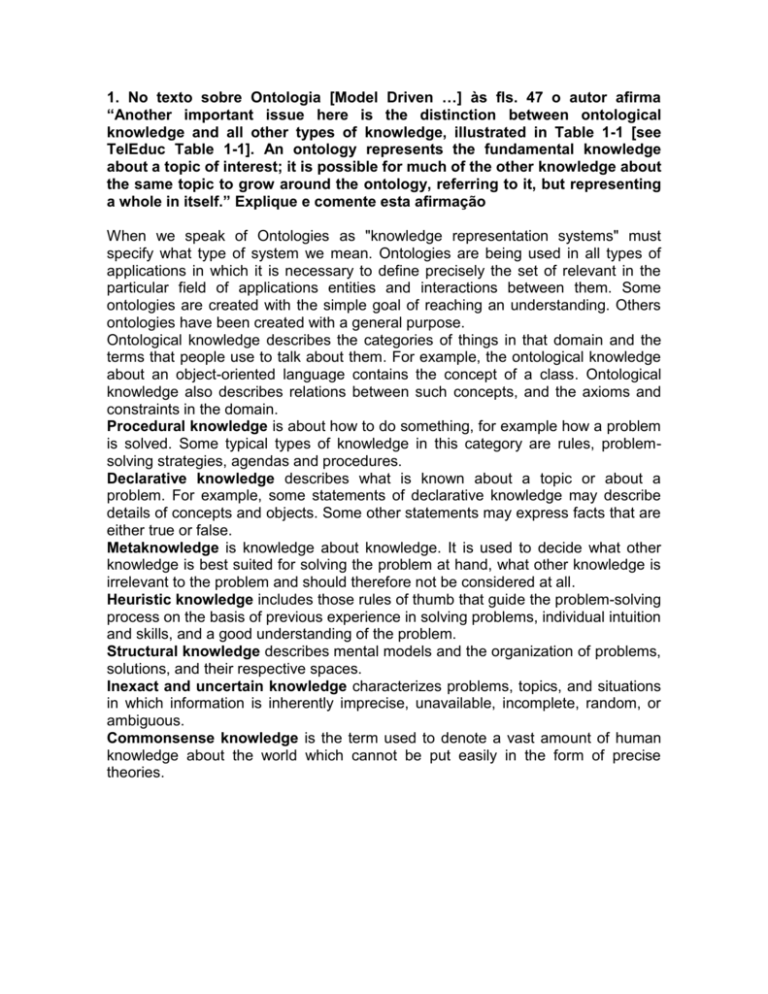
1. No texto sobre Ontologia [Model Driven …] às fls. 47 o autor afirma “Another important issue here is the distinction between ontological knowledge and all other types of knowledge, illustrated in Table 1-1 [see TelEduc Table 1-1]. An ontology represents the fundamental knowledge about a topic of interest; it is possible for much of the other knowledge about the same topic to grow around the ontology, referring to it, but representing a whole in itself.” Explique e comente esta afirmação When we speak of Ontologies as "knowledge representation systems" must specify what type of system we mean. Ontologies are being used in all types of applications in which it is necessary to define precisely the set of relevant in the particular field of applications entities and interactions between them. Some ontologies are created with the simple goal of reaching an understanding. Others ontologies have been created with a general purpose. Ontological knowledge describes the categories of things in that domain and the terms that people use to talk about them. For example, the ontological knowledge about an object-oriented language contains the concept of a class. Ontological knowledge also describes relations between such concepts, and the axioms and constraints in the domain. Procedural knowledge is about how to do something, for example how a problem is solved. Some typical types of knowledge in this category are rules, problemsolving strategies, agendas and procedures. Declarative knowledge describes what is known about a topic or about a problem. For example, some statements of declarative knowledge may describe details of concepts and objects. Some other statements may express facts that are either true or false. Metaknowledge is knowledge about knowledge. It is used to decide what other knowledge is best suited for solving the problem at hand, what other knowledge is irrelevant to the problem and should therefore not be considered at all. Heuristic knowledge includes those rules of thumb that guide the problem-solving process on the basis of previous experience in solving problems, individual intuition and skills, and a good understanding of the problem. Structural knowledge describes mental models and the organization of problems, solutions, and their respective spaces. Inexact and uncertain knowledge characterizes problems, topics, and situations in which information is inherently imprecise, unavailable, incomplete, random, or ambiguous. Commonsense knowledge is the term used to denote a vast amount of human knowledge about the world which cannot be put easily in the form of precise theories. 2. Considere o exemplo sobre RDF apresentado às fls 45-46 do livro texto. Compare este exemplo definido via RDF e via UML (Slide 13). Plain-English RDF Schema Class: Fungi Definition: Contains all fungi Subclass of: Class Opisthokonta (described in another RDF Schema) Class: Plantae Definition: Includes multicellular organisms such as flowering plants, conifers, ferns, and mosses Subclass of: Class Archaeplastida (described in another RDF Schema) Property: Stationary existence Definition: Adult organism does not ambulate under its own power Range of classes: Class Fungi, Class Plantae Property: Soil habitation Definition: Lives in soil Range of classes: Class Fungi, Class Plantae Property: Chitinous cell wall Definition: Chitin is an extracellular material often forming part of the matrix surrounding cells Range of classes: Class Opisthokonta Property: Cellulosic cell wall Definition: Cellulose is an extracellular material often forming part of the matrix surrounding cells Range of classes: Class Archaeplastida Here I made the UML representation of example (pages 45, 46) in RDF. UML class diagrams provide a static modelling capability that is well suited for representing ontologies. RDF is a simple resource-property-value model designed for expressing metadata about resources on the Web. Web Ontology Language (OWL) is a semantic markup language (XMLbased) for publishing and sharing ontologies on the World Wide Web, which provides a vocabulary to represent classes, classes hierarchies, associations between classes and properties, therefore suitable to represent UML models. The OWL has been developed based on XML, RDF and RDF Schema [11] technologies; however it provides a richer vocabulary than RDF for describing properties and classes.


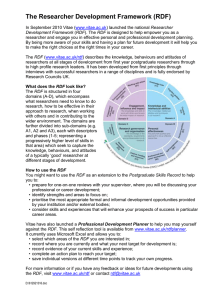
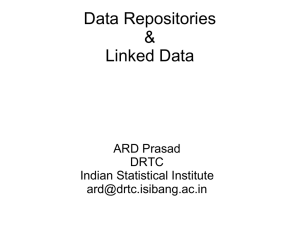
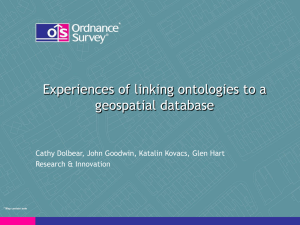

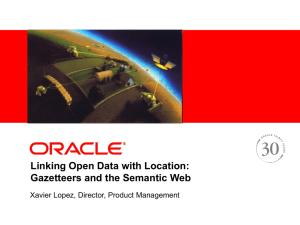
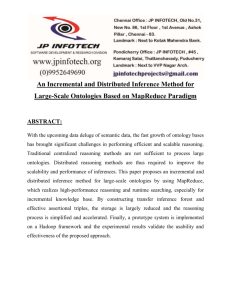
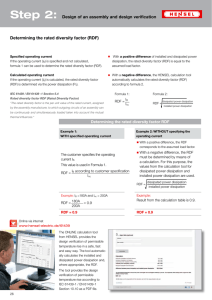
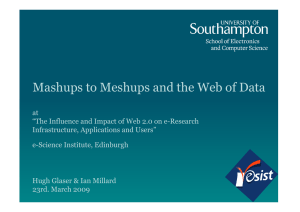
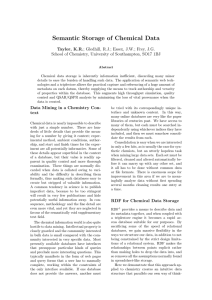
![about="[ds:Control_Room]" typeof="[loc:Room]"](http://s3.studylib.net/store/data/008711116_1-d14c3989302b4c1d4d682aa3cb9a8219-300x300.png)